Rare Allied Bombing Altitude Europe (Air) Map of Sicily - Used during Operation Husky
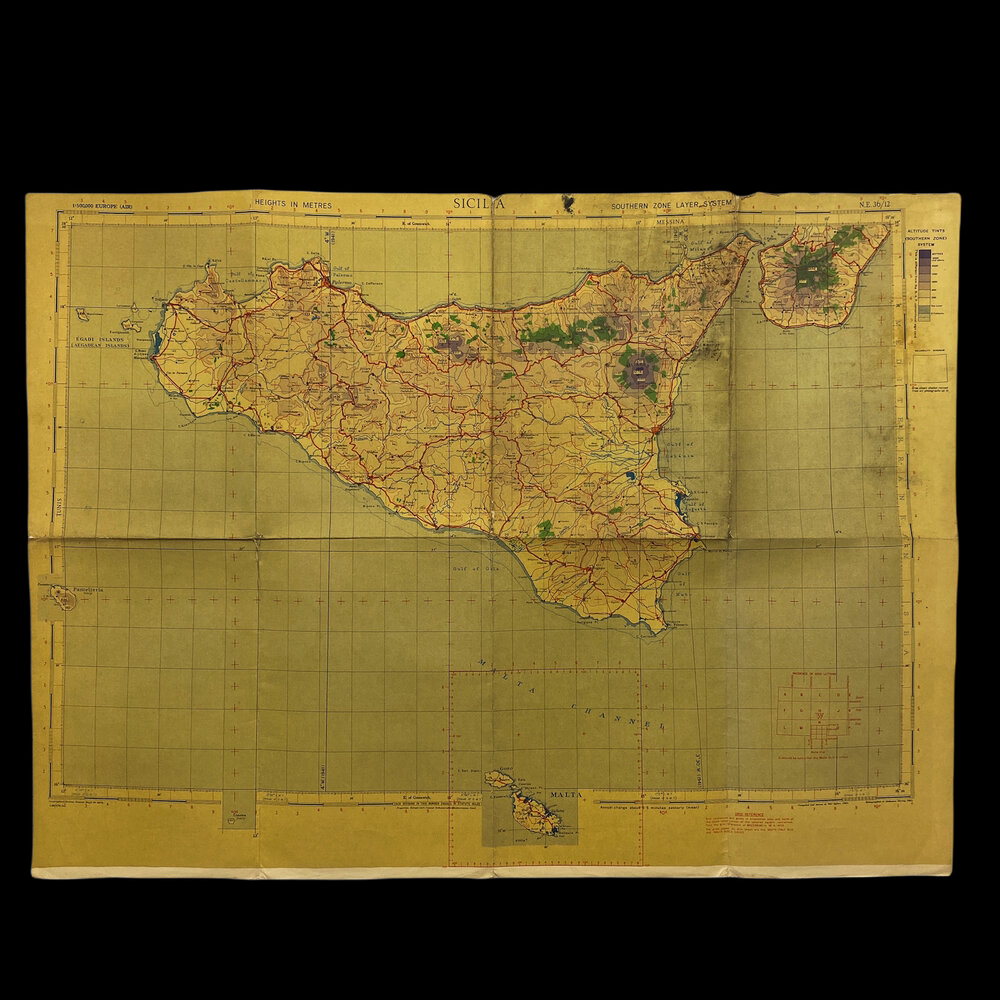
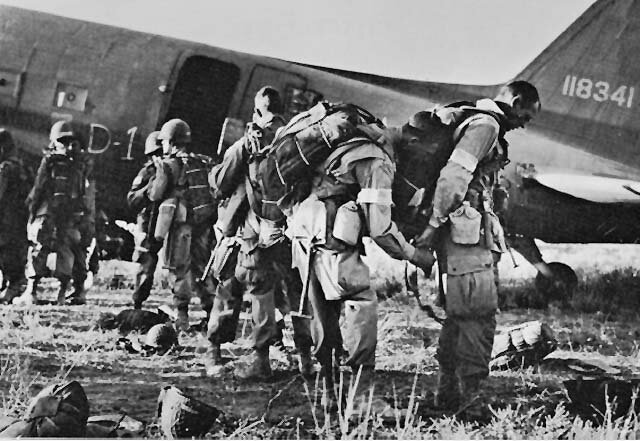


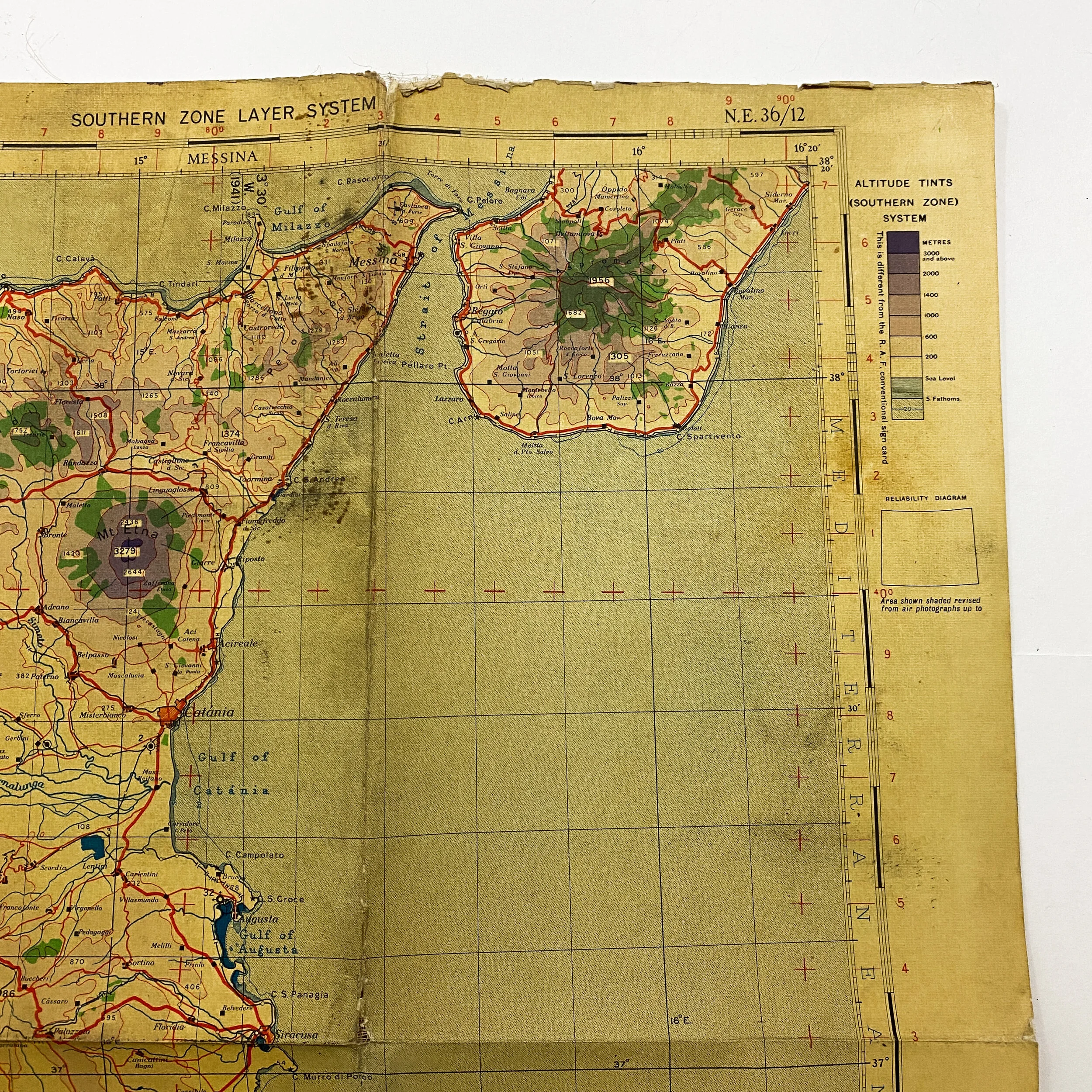


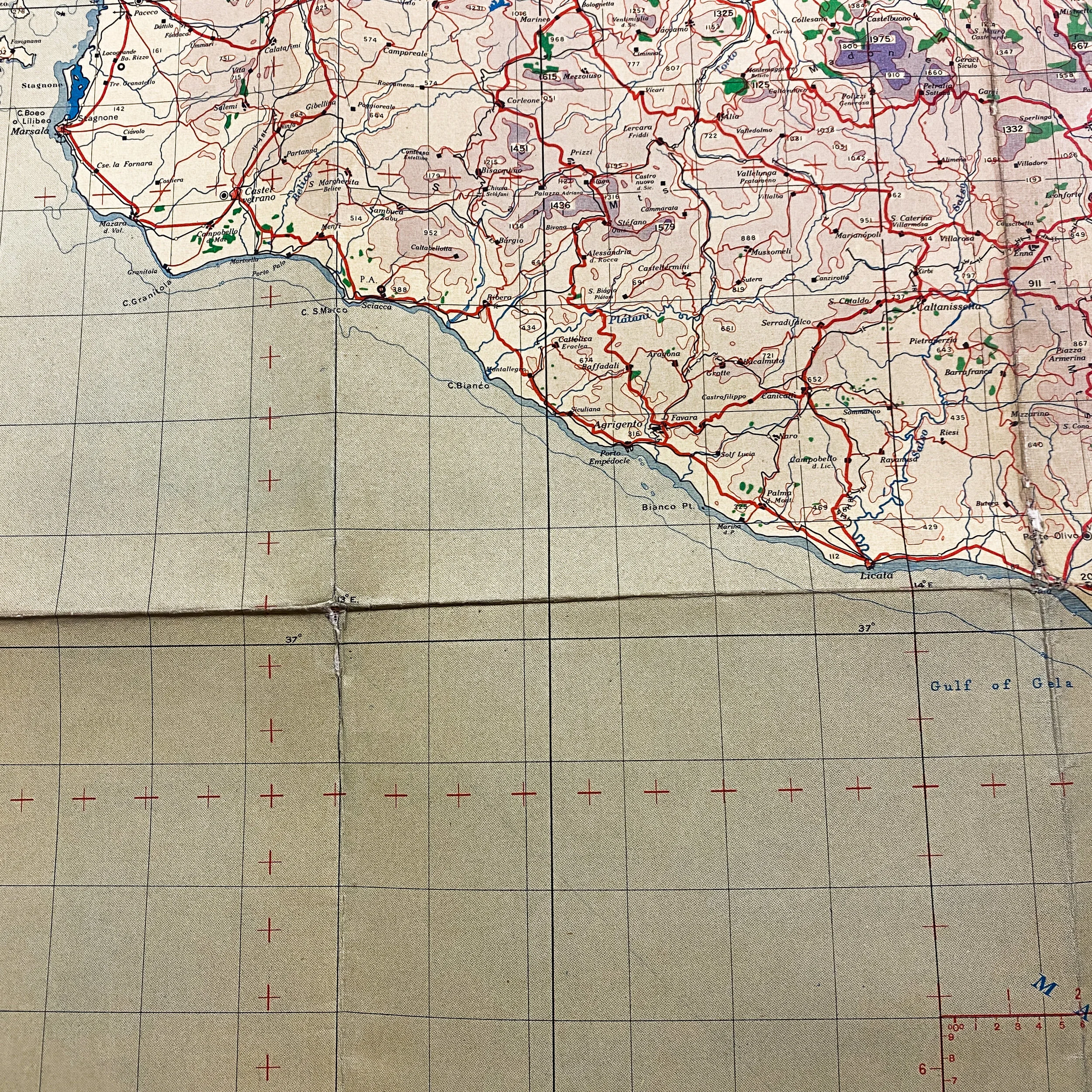


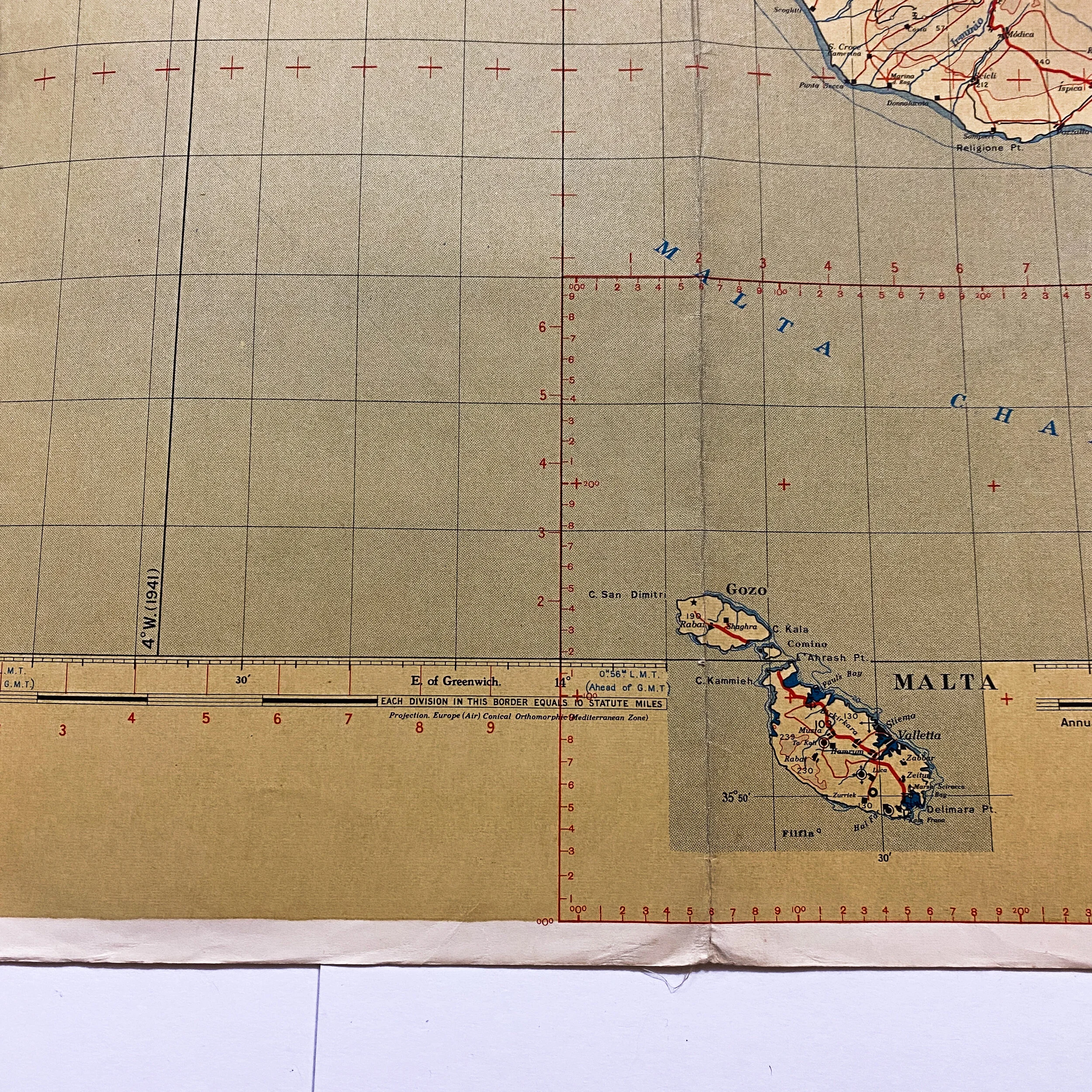

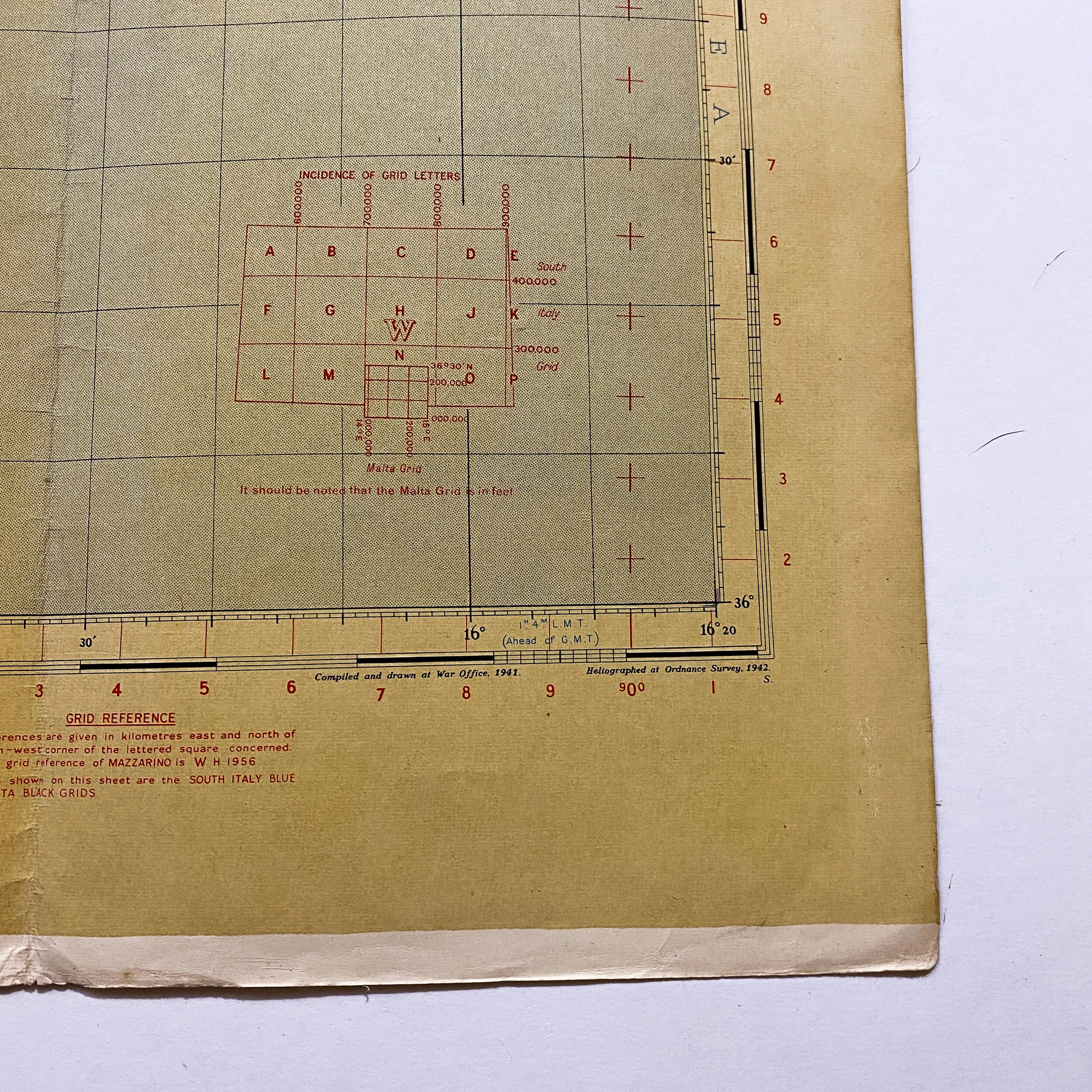

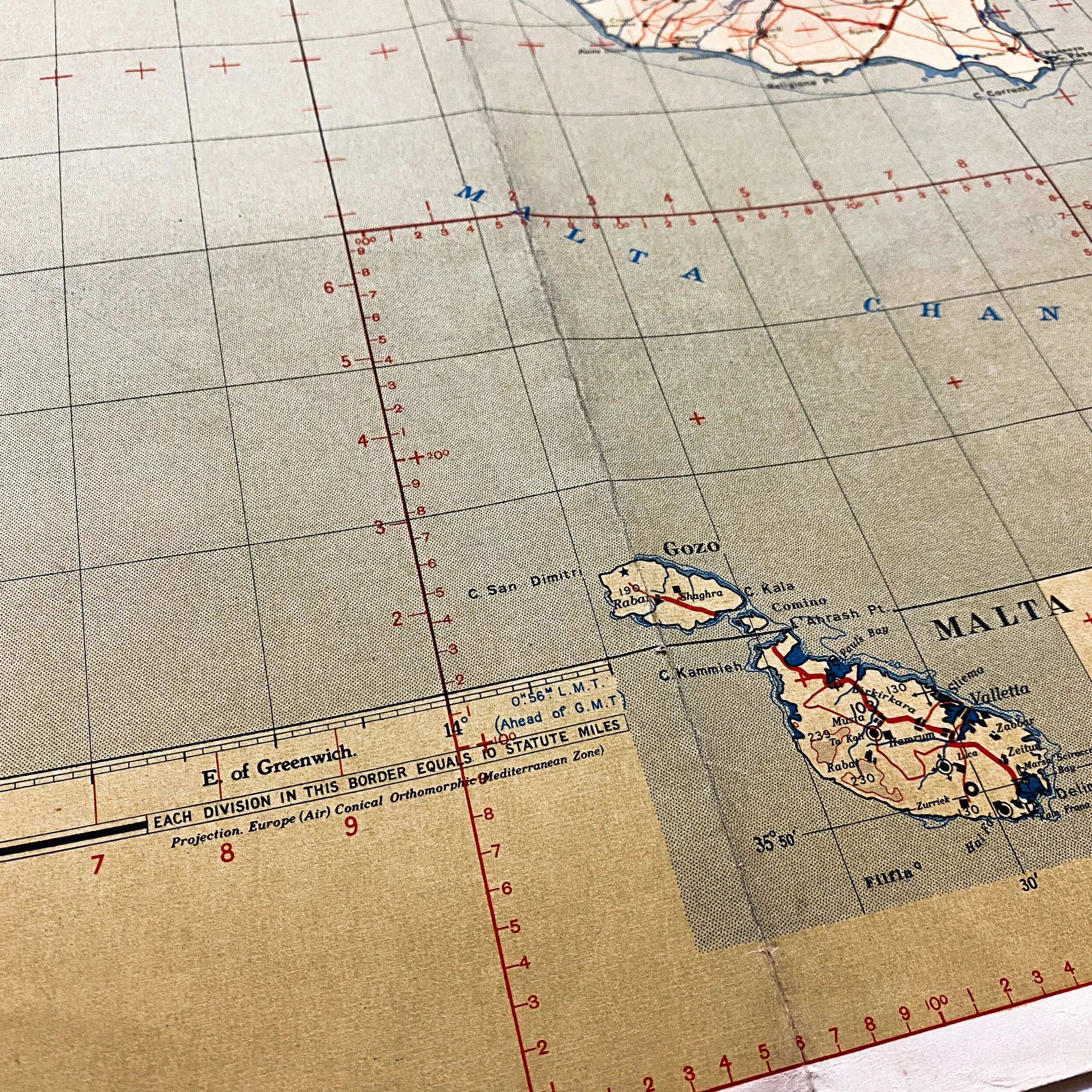




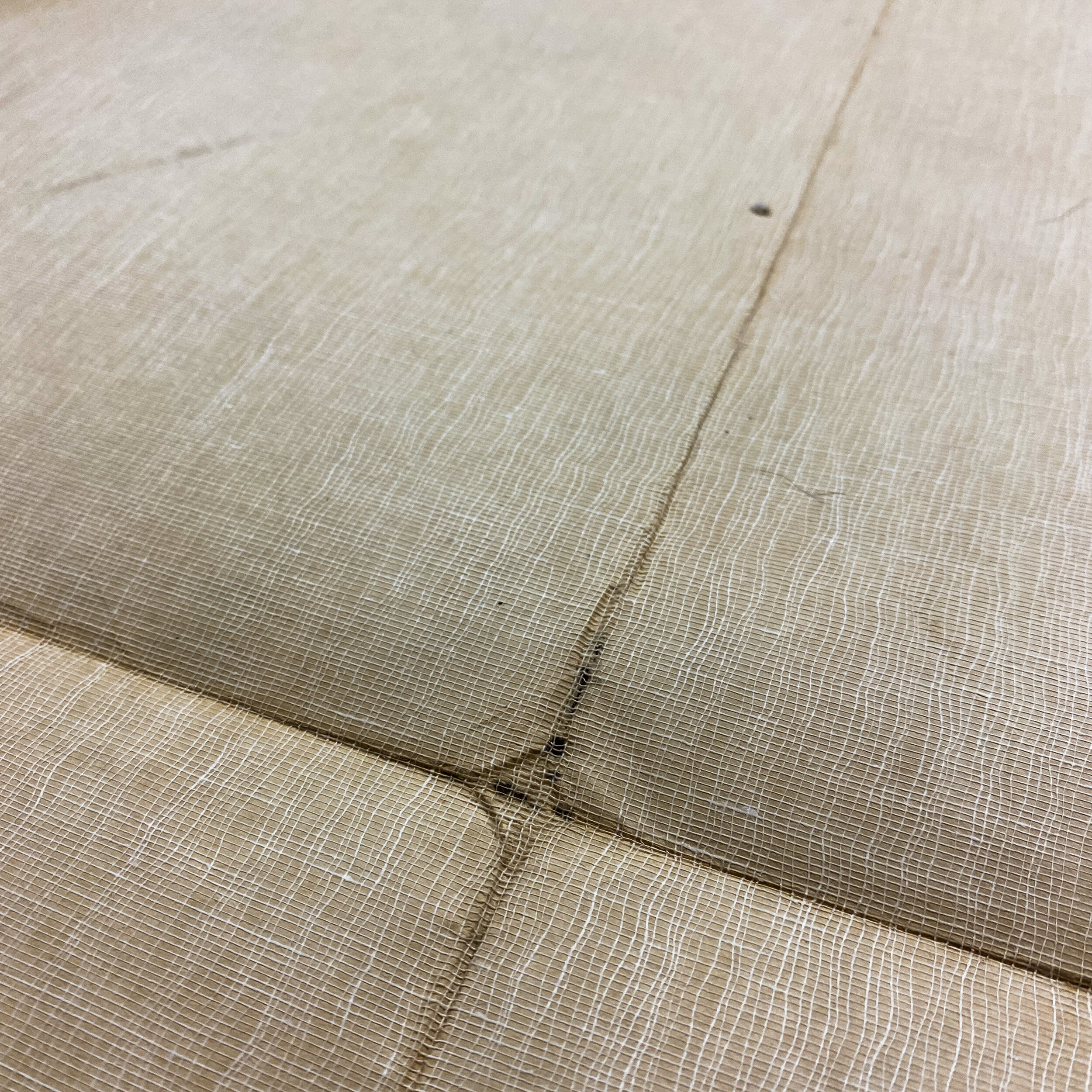
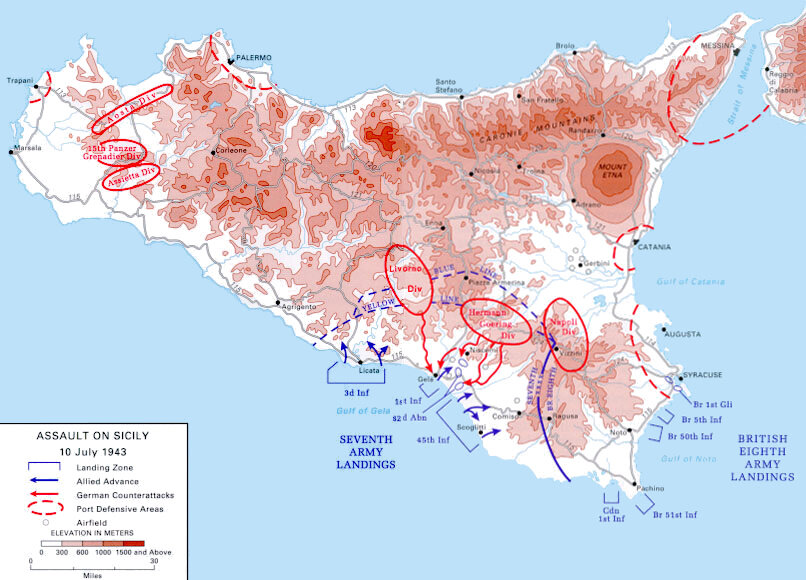
Rare Allied Bombing Altitude Europe (Air) Map of Sicily - Used during Operation Husky
Size: 34 x 25 inches
This extremely rare WWII Europe (Air) map has a very heavily used/salty appearance and was used during the Allied invasion of Sicily, codenamed Operation Husky. This operation was a major campaign of World War II, in which the Allies took the island of Sicily from the Axis powers (Fascist Italy and Nazi Germany). It began with a large amphibious and airborne operation, followed by a six-week land campaign, and initiated the Italian Campaign.
This map is marked Geographical Section, General Staff, No. 4072 Published by the War Office 1942. This is a rare full color, single side, and gridded heavy cloth map of the historic Operation Husky. The map is meant to show the geographical sections of the island as well as important towns, roads and rivers. The colors on this map designate ‘heights in meters’ and shows altitude tints across the entire area of operation of Sicily. Used by Allied bomber crews strategically bombing enemy fortified positions on the island. This map would've been used to properly adjust for the altitude heights, as well as directional navigation using the grid reference chart located on the bottom right.
Bombings of Palermo:
During World War II the Italian city of Palermo, the regional capital and largest city of Sicily, was heavily bombed by both the Royal Air Force and the United States Army Air Force. The situation drastically changed in early 1943, when Palermo became a target for USAAF bombers operating from newly conquered bases in French North Africa. The USAAF used larger numbers of bombers, and frequently made use of Boeing B-17 and Consolidated B-24 heavy bombers as opposed to the medium bombers previously used by the British. Air raids on Palermo escalated in both frequency and intensity, initially as the Allies sought to hamper the use of its harbor for supply convoys bound for Tunisia, and later in preparation for the invasion of Sicily.
The first USAAF raid took place on 7 January 1943, when ten bombers of the 9th Air Force (out of 25 that had taken off from air bases in North Africa) attacked the harbor, sinking the Soldati-class destroyer Bersagliere; many bombs also fell on the city centre, killing 139 civilians. Another raid on the port took place on 23 January; on 3 February, thirty B-17s of the 9th Air Force attacked again the harbor, and again the bombs fell all over the waterfront and the old city centre, killing 98 people and wounding nearly 300. Two days later, the RAF attacked Palermo, hitting the Mondello and San Lorenzo districts; the raid was repeated on 8 February. On 15 February, bombers of the 12th Air Force attacked again the harbour and hit the shipyard, but many bombs fell on the city, killing 226 civilians. On 20 February, the RAF attacked the Boccadifalco air base, but the suburbs of Palermo were also hit; the same happened two nights later.
Operation Husky:
To divert some of their forces to other areas, the Allies engaged in several deception operations, the most famous and successful of which was Operation Mincemeat. Husky began on the night of 9–10 July 1943, and ended on 17 August. Strategically, Husky achieved the goals set out for it by Allied planners; the Allies drove Axis air, land and naval forces from the island and the Mediterranean sea lanes were opened for Allied merchant ships for the first time since 1941. The Italian leader, Benito Mussolini, was toppled from power in Italy and the way was opened for the Allied invasion of Italy. The German leader, Adolf Hitler, "canceled a major offensive at Kursk after only a week, in part to divert forces to Italy", resulting in a reduction of German strength on the Eastern Front. The collapse of Italy necessitated German troops replacing the Italians in Italy and to a lesser extent the Balkans, resulting in one fifth of the entire German army being diverted from the east to southern Europe, a proportion that would remain until near the end of the war.